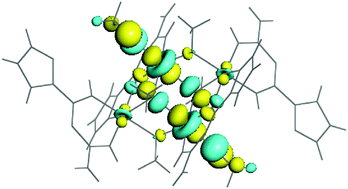Insights into the control of magnetic coupling in the Mn4III complex: from ferromagnetic to antiferromagnetic†
Abstract
Magnetic coupling interactions of a MnIII4 system are investigated by calculations based on density functional theory combined with a broken-symmetry approach (DFT-BS). Three different interactions including ferromagnetic and antiferromagnetic coupling are concomitant in this complex. This magnetic phenomenon of the complex is due to the different bridging angles between the


 Please wait while we load your content...
Please wait while we load your content...